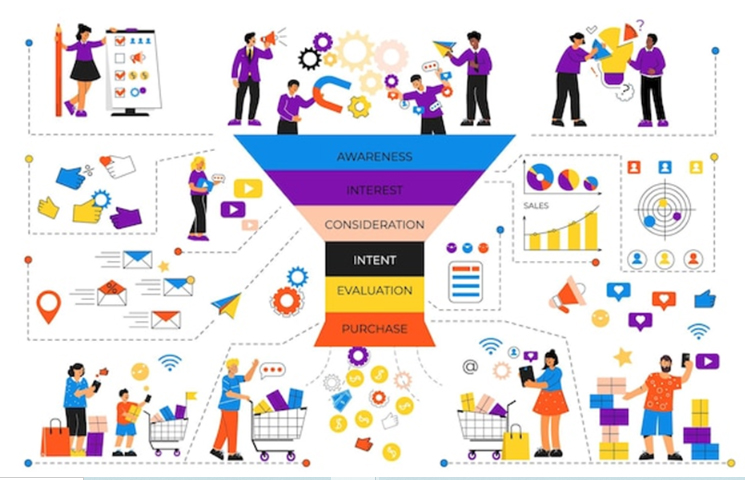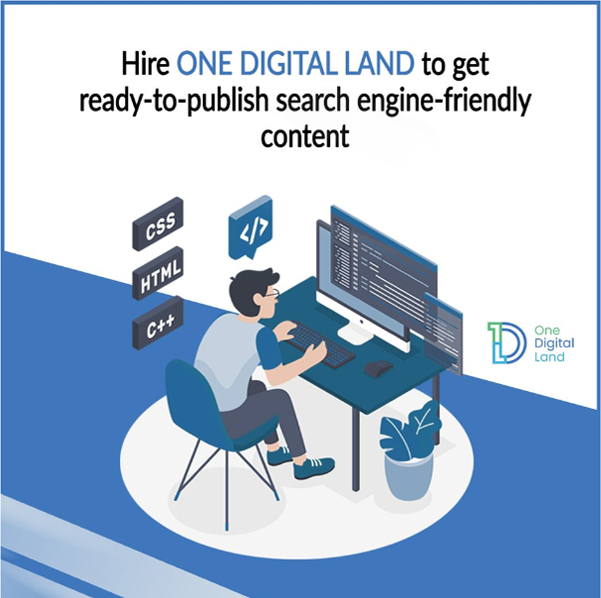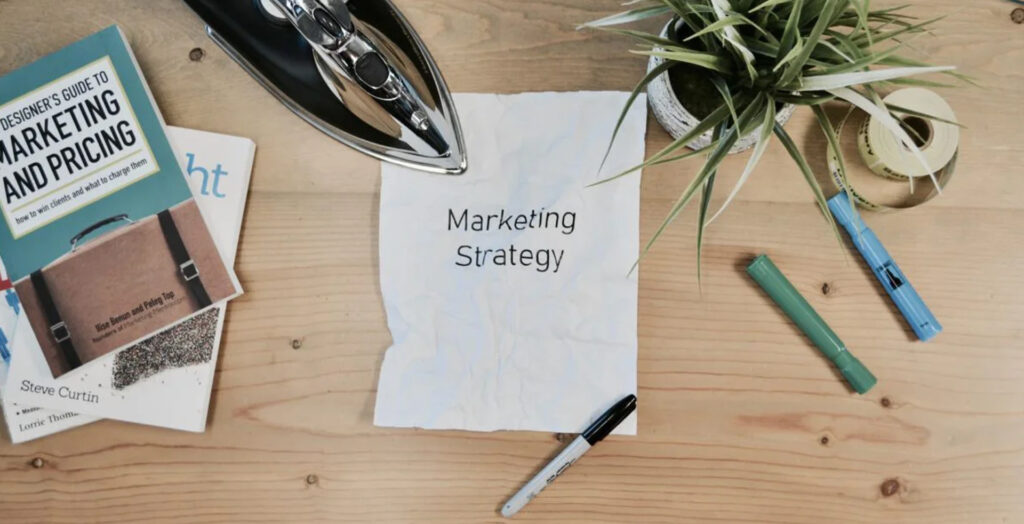Do you create high-quality content but have not been able to get results? Do you have a B2B content strategy that can help you increase your search engine rankings, generate leads, and earn traffic? It is possible that your high-value content is not deriving the desired results because you do not have a concrete content strategy in place.
Digital content marketing will not produce results unless you have a digital content marketing strategy in place because you are not doing it correctly. You are simply creating content without regard for any goal, optimization, process, or even KPIs (Key Performance Indicators).
Moreover, many companies tend to avoid curating a digital content marketing strategy for their business because they believe that a B2B content marketing strategy is a lengthy document that only specialists can create. That is not correct.
So, in this blog, we have boiled down all the practical methods and processes we have used to get results and combined them into an easy guide of eight steps that you can use to develop a B2B content marketing strategy for your business.
The nature of your enterprise and what your target audience needs will heavily influence how you build your content strategy. In either case, this blog will assist you in achieving your digital content marketing goals.
Before we start, let’s first define what a content strategy is.
Content Strategy: Meaning and Implications
A digital content marketing strategy consists of a set of steps you can take to implement and enact your content marketing plan and meet your business objectives. Attempting to create and publish content without a firm B2B content marketing strategy is like leaving a bull in a china shop, and more so, with a blindfold on. That never works out great. In fact, it will most definitely lead you far from your business goals.
Here are the key questions to consider when developing a new content marketing strategy (also known as a digital content marketing strategy) or revising an existing one to meet current needs.
- What are your objectives/goals for investing in a digital content marketing strategy?
- What KPIs (Key Performance Indicators) will you employ to measure and track the strategy’s success?
- Who is your intended audience that will consume your content?
- What kind of content are you attempting to produce?
- Where (content channels) will you publish and promote your content?
- How do you measure the effectiveness of your content?
If you have answered these questions, you have got your B2B content marketing strategy in the right place and are ready to convert leads into buyers.
Why Must You Have a B2B Content Marketing Strategy?
A digital content marketing strategy ensures that you are not creating content aimlessly and waiting for results. A content strategy map identifies which audience and demographic you are targeting, which platforms you are using for promotion, how much finances you have set aside for the campaigns, what you are gaining with respect to your expenditure, and what you are failing at.
You also know the consistency at which to create content, what formats to use, how to scale the content, and who will do it.
Without all of this information documented and positioned well, your B2B content marketing efforts will not yield the desired outcomes for your enterprise.
Here are the key questions to consider when developing a new content marketing strategy (also known as a digital content marketing strategy) or revising an existing one to meet current needs.
- What are your objectives/goals for investing in a digital content marketing strategy?
- What KPIs (Key Performance Indicators) will you employ to measure and track the strategy’s success?
- Who is your intended audience that will consume your content?
- What kind of content are you attempting to produce?
- Where (content channels) will you publish and promote your content?
- How do you measure the effectiveness of your content?
If you have answered these questions, you have got your B2B content marketing strategy in the right place and are ready to convert leads into buyers.
Eight Steps to an Effective Digital Content Marketing Strategy
Many brands and small and medium enterprises still do not have an efficient B2B content marketing strategy created for their business needs. In today’s digital business climate, this is nothing less than a huge catastrophe. To avoid this situation from occurring with you, we have cautiously curated this list.
So, let’s get started as we walk you through the process of developing a digital content marketing strategy in eight simple steps.
Establish Clear Content Marketing Goals
Setting goals does not need to be difficult or complicated. A straightforward method to do this is setting S.M.A.R.T. goals. In the term:
‘S’ stands for SPECIFIC: The more narrowed down or specific your goal, the easier it is to know how to reach it.
‘M’ stands for MEASURABLE: The content marketing goals can be measured. The key here is to represent goal success/achievement accurately.
‘A’ stands for ACTIONABLE: The actions that must be taken to achieve the goal.
‘R’ stands for Relevant: The goals should be relevant to your business and help you accomplish or improve something.
And ‘T’ stands for Time-bound: Establish a deadline for when you want it completed.
If this is too tricky, here are a few examples of some goals- increase website traffic by x% in the next six months, get twice as many leads in the upcoming year, boost brand visibility, establish your brand authority, and so on.
Similarly, you can choose to set your goals so that your content marketing strategy is well-directed and measurable.
Discover your Target Audience
You are not attempting to sell your products or services to everyone. Instead, you aim to attract only a specific type of buyer. Therefore, a digital content marketing campaign will be ineffective until you know who that target audience is. For instance, a client who owns an online youth clothing store will target people who wish to buy clothes falling in the client’s niche.
Further narrowing it down, the target audience will primarily be urban youth audiences who want to stay up with the trend and look their best as they step out of their homes.
If you are unsure who your buyer is, creating a buyer’s persona is your best bet. A Buyer’s Persona is the idea of an imaginary buyer who shares the characteristics of the person to whom you are attempting to sell.
For instance, for our online youth clothing store owner, the buyer is something like below:
Age – 17-35
Gender – All inclusive
Challenges- Inadequate trendy and affordable youth clothing options
Goal – Seeking stylish yet affordable, fashionable clothing
Type- People who are tech-savvy, use online shopping, want affordable and good deals, and prefer new season’s clothes at their fingertips.
Content consumed- Reels, videos, social media, and blogs.
Channels used- Social media, Google.
Of course, if you know who your target audience is, you can skip this step.
So, let’s get started as we walk you through the process of developing a digital content marketing strategy in eight simple steps.
Figure What Kind of Content You Will Create for Your Audience
The following factors will determine the kind of content you want to develop:
- What does your target audience expect from your product/service?
- What is your target audience’s point of pain?
- What is the current state of your content landscape? What are the gaps in your content?
- What are your competitors doing to steal your audience?
Based on this, re-examine your content creation capabilities and the budget you are prepared to spend.
A typical buyer progresses through the buyer journey at various stages. Therefore, your content creation should also be influenced by the buyer’s journey. Essentially, each buyer goes through all these stages before making a purchasing decision:
- Awareness
- Interest
- Desire
- Action/Decision
As a small and medium enterprise or a digital marketer, you must understand what the buyer is looking for at each level of the buyer’s journey and their search intent before creating content.

For example, if your consumer is in the awareness stage, writing a comprehensive blog will help draw his attention to the fact that your brand exists. Of course, your blog must first rank high for the keyword your target buyer is looking for.
However, if the buyer is unable to make up their mind and is stuck in the consideration stage, a case study is the type of content you should serve him. This will help him get closer to the last stage, which is the decision stage.
Research What Content Your Audience Is Looking for
Find keywords with a high volume and low keyword difficulty based on the buyer journey stage you are trying to find keywords for. Using a keyword tool makes things much more convenient. You can use keyword-finding tools like Google Keyword Planner or SEMrush to find a range of keywords that match the seed keywords. You can then continue to narrow down your keyword list by adding newer keywords with high search intent.
This gives you a more focused list of keywords for your category. It may also assist you in determining the keywords for which your competitor is ranking.
Another thing to typically do is use titles of topics that receive organic traffic but have few referring domains. That is the low-hanging fruit. Then, you can create excellent content around those topics and backlinks to ensure that you surpass your competitor for that topic and receive better traffic.
Do you want to drive immediate traffic to your website by creating blog content? Discover how to do that here.
Choose Trending Topics to Increase Traffic to Your Website

After you have the keyword list, make sure you are selecting the appropriate topics. Some of the best ways to find the topics that will garner the traffic you want are:
- You provide excellent value when you provide solutions to your customer’s pain points. Create blogs on questions that your target customers might ask at the bottom of the funnel. These blogs should ideally answer the questions that buyers ask before making a final decision.
- Create topics for every type of question that a buyer might ask during the Exposure Stage.
- Look through online communities and platforms for topics. People on such forums constantly ask questions and discuss prevalent pain points in various niches and categories.
- Look for topics that demonstrate your field of expertise. Find subtopics within them. Choose interesting topics that will allow you to establish thought leadership and brand authority. You can discover which topics with your targeted keywords have worked for others.
- You might also want to refurbish your old content before you push a large amount of new content. The old content that has garnered traction before has a higher chance of ranking for your keyword than new content.
- Keep an eye on the topics your competitors are creating content about. Do not simply copy but know the top pages that rank for them and the types of topics that have drawn a lot of traffic. Then, you can find ways to create content on those subjects more thoroughly than they have.
Use a Content Calendar

To finalize your schedule, you must create a content calendar. This will assist you in visualizing and implementing your publishing strategy. Your goal must be to publish as frequently as possible without sacrificing quality.
The following is the list of things to include in a content calendar:
- The topics you would like to cover in a month or three months. It is simpler to begin with one month’s timeline.
- The formats in which you intend to develop content
- When do you want to publish?
- Who will write and edit the content?
- Updates and timelines
While there are numerous free content calendar templates available online, creating a content calendar that suits your requirements is always preferable.
Finalize Content Promotion/Distribution Channels
It is a common myth that investing in content creation and using apt keywords will naturally increase ranking. On the contrary, content also has to be made visible to your audience, which is why you need to promote and distribute your content. Here are some easy content promotion tips to help you promote your content.
- Let your audience know that you have added new content by emailing them. Spend a small amount of money publicizing the ads on social media.
- Use SEO to generate links to your content
- Spend money on guest posts
- Contact niche influencers to create and promote content
- Repurpose any old content that has already gained traction
- Make several teasers and snippets of your content for publishing on social media
The following is the list of things to include in a content calendar:
- The topics you would like to cover in a month or three months. It is simpler to begin with one month’s timeline.
- The formats in which you intend to develop content
- When do you want to publish?
- Who will write and edit the content?
- Updates and timelines
While there are numerous free content calendar templates available online, creating a content calendar that suits your requirements is always preferable.
Monitor the Results from This B2B Content Marketing Strategy
This is the last yet most vital step. How do you intend to track the effort you have expended to create, optimize, and promote your content? Therefore, monitoring the results is critical because it will tell you how well your content is doing.
One of the top things you should do is go to Google Analytics and see how people are consuming your content. There are three main things to look at on Google Analytics- page views, bounce rate, and average time on page. You can also check your leads using the goal conversions if you have goals set up in your Google Analytics for your content.
If you are promoting your content on social media, you should look into the analytics of each platform to see how your audience interacted with it. For instance, you should track which types of content are driving more traffic to your website and which types of content are converting. This will tell you what sort of content is working on social media and the amount of traffic your website is garnering from paid promotions.
Create an Exclusive B2B Digital Content Marketing Strategy with One Digital Land
Enterprises must realize that content marketing is a long-term endeavor that must be planned. If you want to give it a shot, make sure you don’t do it thoughtlessly. A B2B content strategy establishes the framework for your digital content marketing and ensures it is effective.
Far too many people invest solely in content creation and mistake it for content marketing. Unfortunately, there are also many who have been duped into believing that just an SEO strategy that is not accompanied by a proper content creation strategy is enough. However, any of these will not produce long-term results.
If you want your company to gain website traffic, brand visibility, and convertible leads, you must invest in proper content marketing. That begins with a solid content strategy.

We at One Digital Land would love to help you if you have any further questions. Or, to discuss a new and exclusive content marketing strategy for your business, you can feel free to contact us.

